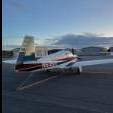Is my Mooney slow?
-
Members Online
- Flyler
- hammdo
- Jim Peace
- Hank
- redbaron1982
- pirate
- DMM
- wings_level
- Sherman17
- Parker_Woodruff
- Oscar Avalle
- RescueMunchkin
- buddy
- docjeffry
- Hector
- ChuckSchneider
- rklems
- MatthiasArnold
- Mreed420
- Brandt
- LANCECASPER
- Matthew P
- dzeleski
- Boilermonkey
- hazek
- milotron
- mluvara
- M20F
- flyboy0681
- Ragsf15e
- RideOrFly
- CCAS
- IvanP
- eman1200
- Raistlin
- exM20K
- TCC
- PT20J
- Wingover


Recommended Posts
Join the conversation
You can post now and register later. If you have an account, sign in now to post with your account.